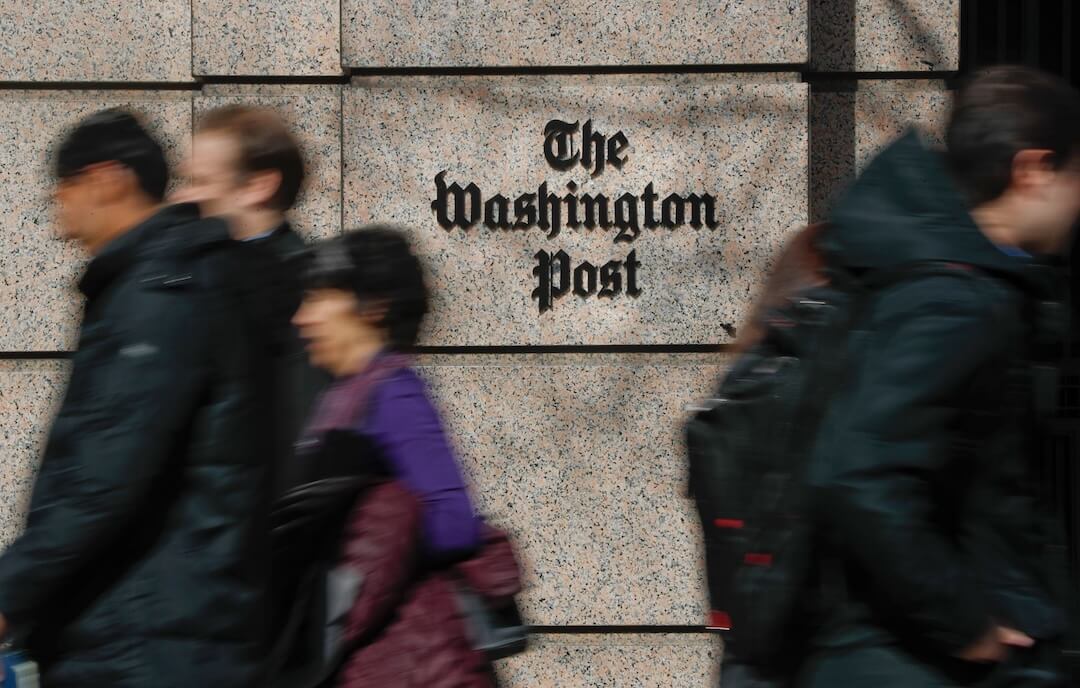The New York Times explains the graphic photo (shown below) on its home page that illustrates coverage of Friday’s deadly shooting at the Empire State Building.
“It is an extremely graphic image and we understand why many people found it jarring,” Times spokesperson Eileen Murphy told me in an email. “Our editorial judgment is that it is a newsworthy photograph that shows the result and impact of a public act of violence.”
My Poynter colleague Kenny Irby said he had no problem with photos that conceal victims’ identities through pixelization, vantage points, etc. “The New York Times photo, while it is incredibly compelling and disturbing, what makes it graphic is the blood, the color … but blood is an inextricable part of a mortal wound,” Irby said.
“On the Media”‘s Bernie Bernstein tracked down the photographer, who works in the same building as the victim and the shooter. About 10 minutes after the shooting, Sam Gewirtz said, he opened the window, “stretched his arm out, iPhone 4s in hand, and took one shot. The photo that appeared on the Times’ front page was taken without an eye behind the viewfinder.”
Gewirtz told Bernstein that he thinks the photo “was too gory.”
People on social media expressed plenty of opinions about the decision, as people on social media are prone to do.
I admire the @nytimes for their front page photo showing the devastating, bloody consequences of gun violence twitter.com/sacca/status/2…
— Chris Sacca (@sacca) August 24, 2012
Really graphic picture on @nytimes front page right now.Is that necessary?
— scott connor (@scottconnor) August 24, 2012
Hey @nytimes, take the horrifically graphic photo of the Empire State Building shoot off your homepage. It’s offensive.
— Jamie Moorer (@jamienoel) August 24, 2012
A couple years ago I edited a piece by Ryan Kearney about Gawker’s decision to run a graphic photo of a murder victim. He spoke with John Long, the chairman of the National Press Photographers Association’s ethics committee, who told him journalists should ask, “Does the public need this information in order to make informed choices for society? This would be the driving force behind running sensational photos — not profit, not titillation.”
He notes certain photos that, despite being graphic, met that requirement: the dead American soldier dragged through the streets of Mogadishu; the naked girl fleeing a napalm bomb during the Vietnam War; the execution of a Viet Cong captain during the same war.
In the photo The Times ran — which, as of this writing, is still one of the images you can see by clicking through the photos on the homepage — the victim’s hard to identify, and the awful, vivid rivulets of blood running from the person’s shoulders toward the street speak volumes about the effects of gun violence. I think it’d pass Long’s test.
Poynter’s Al Tompkins also suggests questions to consider before publishing graphic images, including “How will you warn the audience? How will you explain your decisions the public?”
Journalists being journalists, one Times employee found some dark humor in the situation, referring to the paper’s incoming ombudsman.
Listen folks, about that photo, we just wanted to make sure that @sulliview had some work to do when she starts in September.
— Michael Roston (@michaelroston) August 24, 2012
Correction: In the original version of this post, we said the photographer’s name was Sam Gerwitz, which is how it appeared in the “On the Media” story and how it appears in this LinkedIn profile. However, Times photo editor Steve Berman phoned Friday night to say the photographer — whom The Times originally credited as Sam Gewitz — is named Sam Gewirtz. A phone call to Gewirtz’s employer, The Gina Group, confirmed the Gewirtz spelling. The Gina Group was unable to explain the LinkedIn page for Sam Gerwitz.






Comments